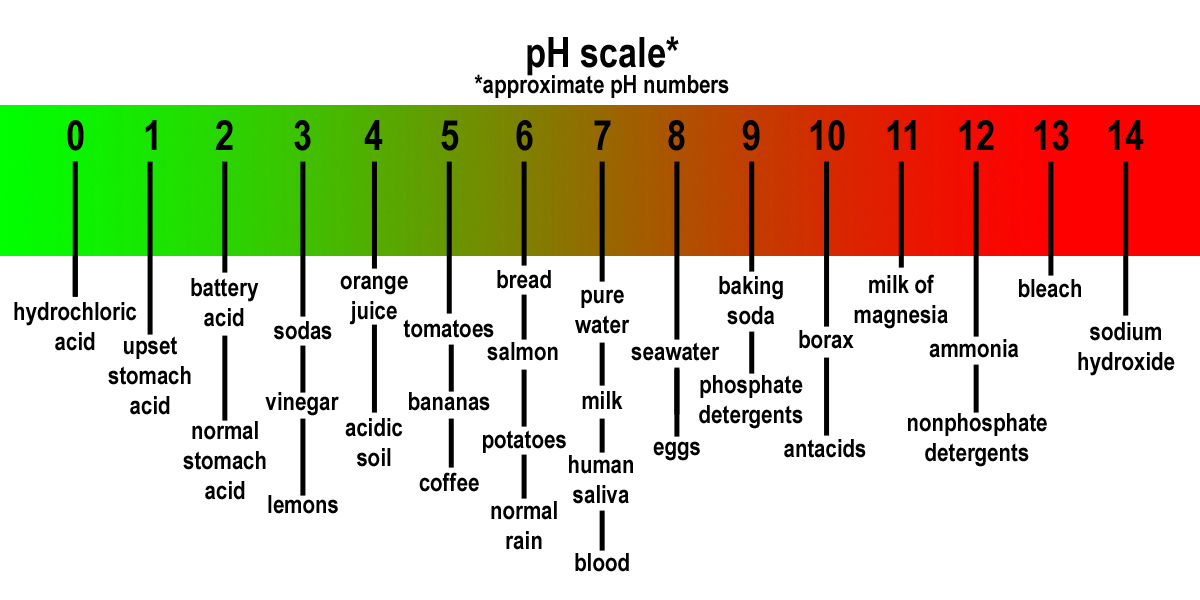
The concept of pH is fundamental to understanding the properties and behaviors of various substances in our world. pH, which stands for potential of hydrogen, is a measurement scale used to determine the acidity or alkalinity of a solution. It is an essential concept in chemistry, biology, environmental science, and even everyday life.
In this article, we will explore 11 astounding facts about pH that will expand your understanding of this crucial concept. From the history of pH measurement to its role in maintaining a balanced ecosystem, these facts will not only surprise you but also highlight the significance of pH in various fields.
So, grab your lab coat, put on your thinking cap, and get ready to dive into the fascinating world of pH!
Key Takeaways:
- pH is a measure of how acidic or basic a substance is, with 7 being neutral. It affects everything from the food we eat to the water we swim in, so it’s important to understand its impact on our daily lives.
- Maintaining the right pH levels is crucial for our health and the environment. From preserving food to keeping our teeth healthy, pH plays a big role in many aspects of our lives.
The Meaning of pH
pH stands for “potential of hydrogen” and represents the concentration of hydrogen ions in a solution. It is a logarithmic scale ranging from 0 to 14, with 7 considered neutral.
pH and Acidity
A substance with a pH value of less than 7 is considered acidic. The lower the pH number, the higher the acidity. For example, lemon juice has a pH of around 2, making it highly acidic.
pH and Alkalinity
On the other end of the scale, substances with a pH greater than 7 are considered alkaline or basic. Baking soda, with a pH of around 9, is an example of an alkaline substance.
The pH of Water
Pure water has a pH of 7, which is considered neutral. However, the pH of water can vary depending on factors such as minerals and pollutants present in the water.
pH and Biological Systems
Living organisms, including humans, have specific pH requirements to maintain optimal functioning. For example, the pH of human blood is tightly regulated at around 7.4.
Acid Rain
Acid rain is characterized by a pH value below 5.6, indicating high acidity. It is caused by emissions of sulfur dioxide and nitrogen oxide, mainly from industrial activities and vehicle emissions.
pH in Food Preservation
pH plays a crucial role in food preservation. Foods with lower pH levels, such as pickles and jams, create an environment that inhibits the growth of bacteria and other microorganisms.
pH in Swimming Pools
In swimming pools, maintaining the pH level between 7.2 and 7.8 is essential for optimal disinfection and to prevent skin and eye irritations.
pH and Tooth Decay
Acidic foods and drinks can erode tooth enamel, leading to tooth decay. Monitoring the pH of oral care products and reducing acidic food consumption helps maintain healthy teeth.
pH in Cosmetics
pH balance is crucial in skincare and cosmetic products. Products with a pH close to the skin’s natural pH level (around 5.5) are considered gentle and less likely to cause irritation.
pH in Soil
Soil pH affects plant growth and nutrient availability. Different plants thrive in different pH levels, with some preferring acidic soils (e.g., blueberries) and others alkaline soils (e.g., lavender).
Understanding the significance of pH in various aspects of life allows us to make informed decisions about our health, environment, and everyday choices. The 11 astounding facts about pH highlight its importance in multiple fields and emphasize the need for pH balance in different applications.
Conclusion
Understanding pH is essential for anyone studying or working in the field of chemistry. These 11 astounding facts about pH shed light on the significance of this scale in various aspects of our lives. From the importance of maintaining proper pH levels in our bodies to the ways pH affects the environment, these facts highlight the ways pH impacts everything from everyday household items to complex chemical reactions.
Learning about pH not only enhances our understanding of chemistry but also aids in making informed decisions about personal health and the environment. Whether you’re a student, a scientist, or simply curious about the world around you, exploring the fascinating world of pH will undoubtedly deepen your knowledge and appreciation for the scientific principles that govern our existence.
FAQs
1. What does pH stand for?
pH stands for “potential of hydrogen.”
2. How does pH indicate acidity or alkalinity?
pH is measured on a scale of 0-14, with values below 7 indicating acidity, 7 indicating neutrality, and values above 7 indicating alkalinity.
3. Why is maintaining the pH balance important?
Maintaining the pH balance is crucial for various reasons, such as proper functioning of enzymes, preservation of the environment, and even for controlling the growth of bacteria.
4. How does pH affect our bodies?
pH levels affect bodily functions, including digestion, circulation, and the functioning of specific organs. Imbalances in pH can lead to various health issues.
5. What are some common examples of pH in everyday life?
Examples of pH in everyday life include the pH of common beverages like coffee and lemonade, household cleaning products, and even skincare products.
6. How is pH measured?
pH is measured using pH indicators, pH meters, or litmus paper. These methods determine the concentration of hydrogen ions in a solution and provide a pH value.
7. What is the pH level of pure water?
The pH level of pure water is 7, which indicates neutrality.
8. Can pH affect plant growth?
Absolutely! pH levels in soil impact the availability of nutrients to plants. Different plants have different pH preferences for optimal growth.
9. Can pH values be negative or higher than 14?
No, pH values cannot be negative or higher than 14. The pH scale ranges from 0 to 14.
10. Can pH levels be changed?
Yes, pH levels can be changed by adding substances that are either acidic or alkaline to the solution.
11. Are there any natural substances with extreme pH levels?
Yes, some natural substances, such as gastric acid in the stomach with a pH of around 1.5 and lye with a pH of around 13, have extreme pH levels.
pH plays a crucial role in our lives, from the inner workings of our bodies to the environment around us. Understanding pH scale and its significance can help you make informed decisions about your health, garden, and everyday products. Curious about the intricacies of pH? Explore mindblowing facts about the pH scale, learn how to measure soil pH accurately with the best soil pH meters, and discover the top soil testing kits for your gardening needs. Dive into the world of pH and uncover its secrets!
Was this page helpful?
Our commitment to delivering trustworthy and engaging content is at the heart of what we do. Each fact on our site is contributed by real users like you, bringing a wealth of diverse insights and information. To ensure the highest standards of accuracy and reliability, our dedicated editors meticulously review each submission. This process guarantees that the facts we share are not only fascinating but also credible. Trust in our commitment to quality and authenticity as you explore and learn with us.


